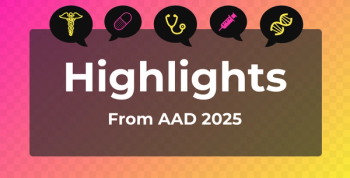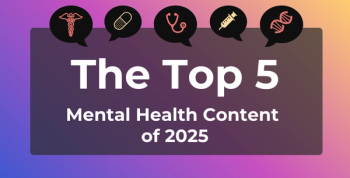
- December 2025
- Volume 31
- Issue 13
- Pages: SP934-SP935
5 AI and Digital Health Advances Transforming Breast Cancer Care and Research

Key Takeaways
- AI enhances breast cancer care by improving mammography accuracy, reducing false negatives, and aiding in clinical trial enrollment and design.
- AI-driven digital patient profiling reduces placebo use in trials, addressing ethical concerns and improving patient trust in clinical research.
AI and digital tools are reshaping breast cancer care—from screening and trials to remote monitoring and lifestyle support.
Breast cancer is the No. 1 most researched disease in the world, for the fourth year in a row, since 2021, and artificial intelligence (AI) has made it easier to screen, treat, and assess patients with breast cancer.1
The use of AI has allowed researchers and practitioners to provide better and more immediate care to patients with breast cancer. As the second leading cause of cancer death among women globally, advancements in breast cancer research, whether on new therapies or tools, continue to improve the lives and outcomes of patients.2 Yet, a majority of breast cancer research is concentrated in the US and China, often leaving out smaller countries with fewer resources and higher rates of patients with more aggressive subtypes of breast cancers.1
Clinical leaders and data scientists, however, believe that with the implementation of AI in clinical research, advancements in breast cancer prevention, treament, and survivorship care could reach more patients.1
Here are 5 ways AI and other technologies are being used to enhance breast cancer research and care.
1. AI-Powered Mammography Screening for Earlier Breast Cancer Detection
Their
“AI-enhanced mammograms, like Mammogram+ and Mammogram+ Heart, help radiologists with an extra layer of decision support by offering a second read, improving cancer detection rates, and reducing false positives,” Sean Raj, MD, SimonMed Imaging’s chief medical officer and chief innovation officer, said in a written Q&A with The American Journal of Managed Care® (AJMC®). “It also allows more personalized care through tools like automated breast density scoring and individualized breast health reports, which can guide risk-based screening strategies.”
Furthermore, SimonMed also found AI to be particularly good at reducing false negatives in women younger than 50 years with dense breast tissue and in high-risk populations like women who have a family history or genetic predisposition to breast cancer.3
AI in mammography has been shown to improve the detection of malignancies and reduce false negatives in the US; however, in the Netherlands, where 2 radiologists review a screening,
“In order for us to try different things and incorporate this uncertainty metric, this model will underperform compared to the state-of-the-art models,” study author Sarah Verboom, PhD candidate, said in
As researchers continue to test and develop the sensitivity and specificity of AI LLM in mammography and use them in
“I think if we communicate clearly to those women what the performance of AI is and also do their quality control of AI systems,” Verboom said. “I think then women would also be open to just AI reviewing the mammograms if we can guarantee that quality is better than just radiologists in some cases.”
Nevertheless, current clinical applications and research continue to show improvements when using AI in mammography.
“We have already seen a huge improvement with AI tools, and we will continue to incorporate AI into our systems to ultimately better patient health outcomes and save more lives,” Raj wrote.
2. AI-Enabled Trial Designs for Clinical Trial Enrollment
Although breast cancer is the most researched disease in the world, clinical trial enrollment remains low. As of 2022, only 14% of breast cancer clinical trials reached
There are various barriers for patients trying to enroll in clinical trials, many of which are fear-based or related to potential adverse effects, costs, location and transportation, availability, and eligibility, but the biggest is lack of awareness.7 Aside from physicians informing patients of ongoing or recruiting for clinical trials, Trialbee, a software-as-a-service AI recruitment platform, aims to improve strategies for clinical trial recruitment.
The company recently partnered with Bristol Myers Squibb to replace its outdated recruitment strategies. Their consolidation platform, Honey BM, can directly reroute patients from a research article to a relevant or related clinical trial enrollment site.
“We must ensure they have the best possible opportunity to consent and enroll,” said Trialbee CEO Matt Walz in a
Not only can Trialbee’s platform connect patients directly to clinical trials, increase enrollment rates, and spread awareness, but it also helps researchers looking for patients. The majority of patients surveyed by the National Cancer Institute said that they would prefer to go to their health care provider for clinical trial information, yet oncology practices face the same barriers.7,8 Staying aware of current clinical trials, guidelines, and eligibility; identifying ideal participants; and introducing the idea of participation have become increasingly complicated.8
However, Ochsner MD Anderson, in Louisiana, has found a way to not only increase trial enrollment through community engagement but also accrue a diverse patient population as well.7
Nearly 30% of the patients enrolled in clinical trials at Ochsner Health are African American, said Melanie Sheen, MD, a hematology and oncology specialist at Ochsner MD Anderson.
“We have been very successful in treating our patients with autonomy, with respect, and really gaining that trust across the board in our entire department,” Sheen told AJMC. “Over time, the more trust we build with our patients, the more enrollment in clinical trials and diverse enrollment in clinical trials will improve.”
3. AI-Driven Digital Patient Profiling That Reduces Placebo Use in Breast Cancer Studies
Other
Phesi, an AI solutions–driven clinical data company, aims to close this gap in enrollment with its digital patient profiles. The profiles would allow researchers to model the control arm of a study, therefore reducing the number of patients who would have received the placebo or inferior comparator otherwise.
“It's just not ethical for the sponsors to put [patients who are] basically in a dire situation on the placebo,” said Gen Li, PhD, president and founder of Phesi, in an interview with AJMC.6 “[But], if we are able to mimic how those placebo patients would be behaving using the digital twin, then we will be able to reduce the exposure of those patients to the placebo and to all the inferior comparators.”
4. Remote Digital Monitoring for Patients With Breast Cancer Receiving Chemotherapy
In addition, technological advancements have allowed practitioners to provide care to patients remotely. At Ochsner MD Anderson, physicians and nurse practitioners can stay updated with patients’ status, including their blood pressure, weight, and temperature, every day. This is especially useful for monitoring patients with breast cancer and ongoing chemotherapy.
The tool,
“I like to describe it to my patients as having a nurse in your pocket every day,” Sheen said.
Nurse practitioners are alerted if they notice a patient’s weight rapidly declining. From there, they can reach out and inquire about another related symptom and even request that patients come in person for further evaluation. Or patients can self-report any new symptoms when prompted by a survey on the platform.
“And if the answer is yes, it opens up a whole new page where patients can log their symptoms and even request to be seen that day based on those symptoms,” Sheen explained. “We've been able to transition that into preventing people from going to the emergency room and being admitted.”
With this tool, Ochsner MD Anderson can reduce patient burden, thus elevating cancer care to an entirely different level, Sheen said.
5. Digital Behavior Change Platforms Improving Survivorship Outcomes
Digital patient monitoring can also be used to deliver health care interventions, such as those targeting weight loss among women with breast cancer. Weight loss interventions have been shown to reduce the risk of comorbidities such as diabetes and cardiovascular disease, thus improving the quality of life in patients with cancer.10
The
Combined with digital patient monitoring, digital behavioral intervention can contribute to better outcomes for patients with breast cancer by personalizing their treatments and advancing the state of
References
1. McCrear S, Li G. Breast cancer dominating oncology research, access disparities: Gen Li, PhD. AJMC. November 3, 2025. Accessed November 14, 2025.
2. Breast cancer statistics. CDC. June 10, 2025. Accessed November 14, 2025.
3. McCrear S. AI-enhanced mammograms reduce false negative breast cancer screening results. AJMC. August 19, 2025. Accessed November 14, 2025.
4. McCrear S. AI-assisted mammogram readings reduce radiologist workload, maintain performance. AJMC. August 20, 2025. Accessed November 14, 2025.
5. McCrear S, Verboom S. Uncertainty metrics in AI-assisted mammogram screenings: Sarah Verboom, PhD candidate. AJMC. August 25, 2025. Accessed November 14, 2025.
6. McCrear S. Low trial enrollment, racial disparities limit breast cancer treatment innovation. AJMC. October 24, 2025. Accessed November 14, 2025.
7. McCrear S, Sheen M. Improving clinical trial diversity by building trust: Melanie Sheen, MD. AJMC. November 14, 2025. Accessed November 14, 2025.
8.Underenrollment in clinical trials: patients not the problem. UT Southwestern Medical Center. June 17, 2019. Accessed November 14, 2025.
9. McCrear S, Sheen M. Improving cancer care equity in Louisiana: Melanie Sheen, MD. AJMC. November 14, 2025. Accessed November 14, 2025.
10. McCrear S. Remote weight loss intervention reduces body weight in women with breast cancer. AJMC. August 25, 2025. Accessed November 14, 2025.
11. McCrear S, Olivo A. The future of survivorship care: precision tools for women after breast cancer. AJMC. September 10, 2025. Accessed November 14, 2025.
Articles in this issue
about 1 month ago
Improving Cancer Care Equity in Louisiana: Melanie Sheen, MDabout 2 months ago
CMS Announces GENEROUS Model to Lower Medicaid Drug PricesNewsletter
Stay ahead of policy, cost, and value—subscribe to AJMC for expert insights at the intersection of clinical care and health economics.







































